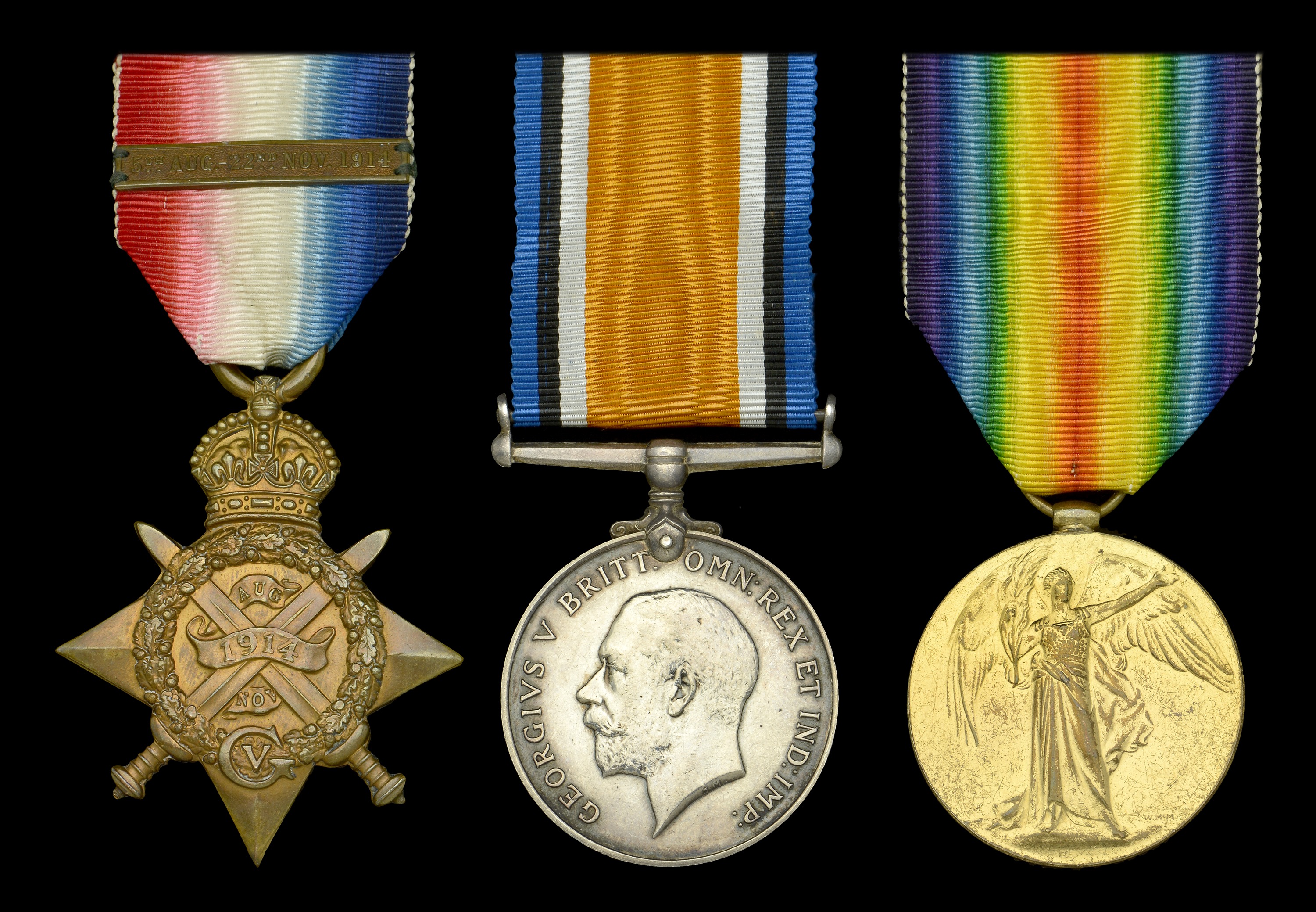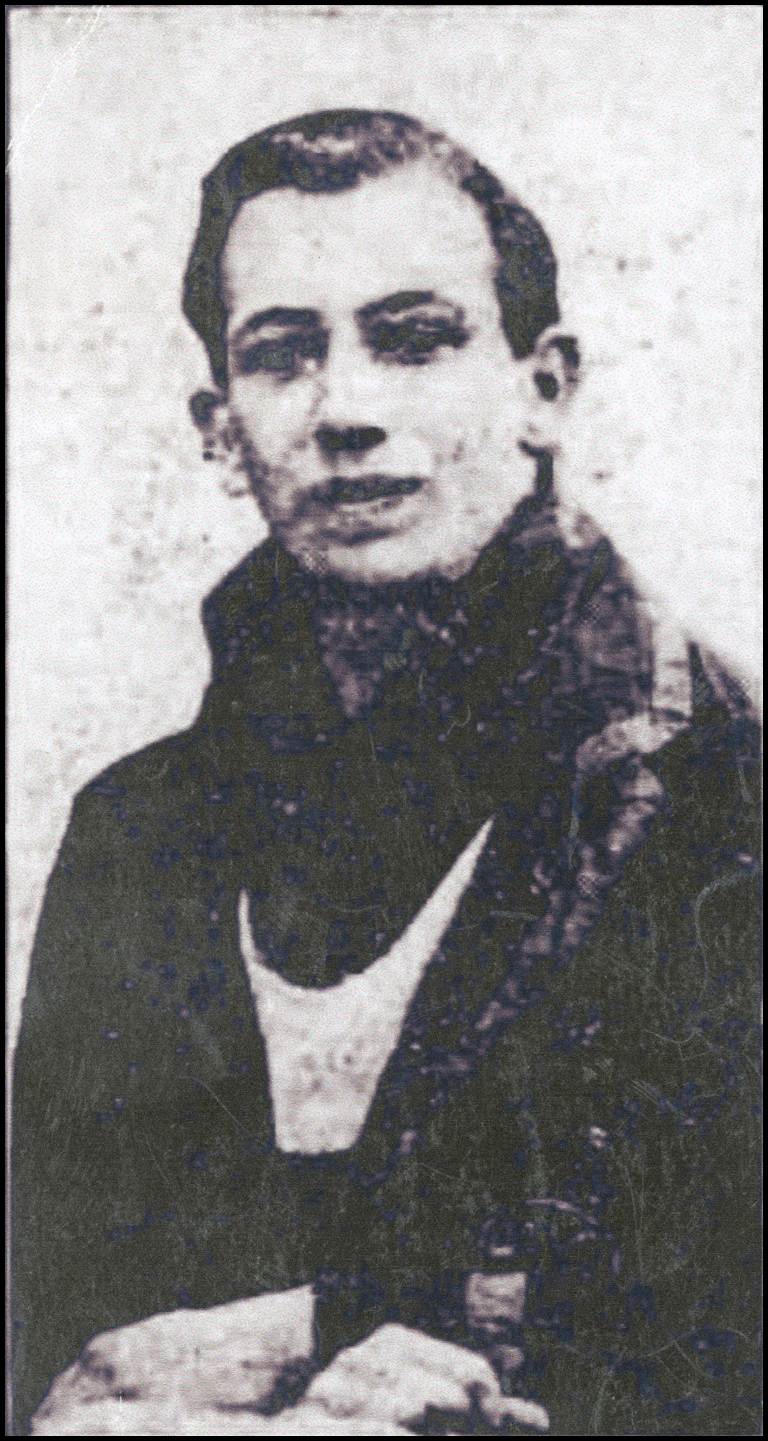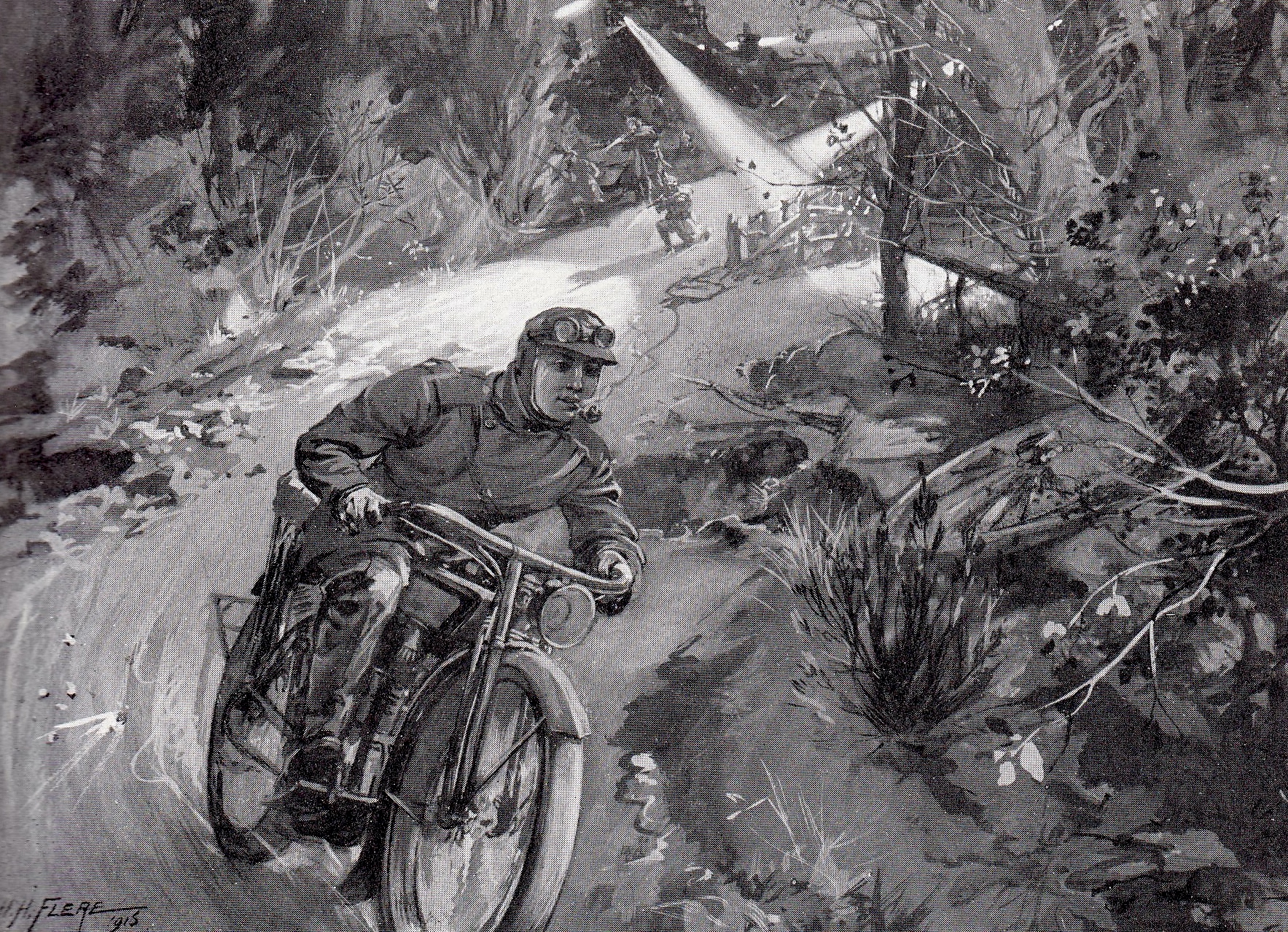Three: Acting Captain H. G. Hodder, Reserve Signal Company, Royal Engineers, a motorcyclist despatch rider who was awarded the D.C.M. for conspicuous gallantry at Langemarck and Veldhoek in October 1914 - acts of heroism which were described and illustrated in Deeds that Thrill the Empire 1914 Star, with clasp (28066 Cpl. H. G. Hodder. R.E.); British War and Victory Medals (Capt. H. G. Hodder.) good very fine (3) £200-£240 --- D.C.M. London Gazette 16 January 1915: ‘For conspicuous gallantry at Langemarck, 23rd-25th October, in voluntarily taking messages with great coolness under heavy rifle and shell fire, and again at Veldhoek, when he acted with similar gallantry under fire and was there wounded.’ Harold George Hodder was born in 1893 at Lowestoft, Suffolk and was a resident of Carlisle Road, Cambridge prior to the Great War. He served during that conflict on the Western Front with the Motorcyclist Section of the Royal Engineers from 17 August 1914. In 1914, the Cambridge Independent Press published a number of articles from Corporal Hodder, as well as letters received from him by his father and Cambridge friends, giving his impressions of the war. Subsequently, whilst recovering from his wounds following the award of his D.C.M., he was interviewed by the same newspaper and details of how he came to be awarded the D.C.M. were published on 22 January 1915. The following matching account with two illustrations can also be found in Deeds that Thrill the Empire: ‘On the night of October 22nd-23rd, 1914, the 1st Division, which had just arrived from the Aisne, was advancing from Poperinghe towards Langemarck. In the morning, near Boesinghe, the 3rd Brigade, on its left front, was fiercely attacked by the Germans, consisting almost entirely of new levies with scarcely two months’ training, who, though mown down by our fire, came on again and again with almost incredible courage and resolution. Though partly driven out of Langemarck, around which some fifteen hundred of their dead were afterwards counted, the enemy held on to a number of houses and several windmills, and they also held a curving line beyond the village, from which they were able to direct a heavy artillery and rifle-fire upon the road leading from Boesinghe. The work of carrying messages along this road was therefore one of the greatest possible danger. Nevertheless, volunteers were not wanting, and a young motorcyclist, Corporal H. G. Hodder, of the Reserve Signal Company, Royal Engineers, who was attached to the 3rd Brigade, particularly distinguished himself, by successfully conveying more than one message through the hottest fire. After driving the Germans back, the 1st Division had proceeded to entrench themselves, but in the evening of the 24th they were relieved by French Territorials and concentrated about Zillebeke, the 3rd Brigade alone remaining in their trenches until two French battalions should arrive to relieve them. As the latter failed to put in an appearance, Corporal Hodder was sent to investigate, and discovered them halted on a road some distance to the rear. When asked why they did not advance, they replied that they did not know where they were, and, as they had been fired upon, they believed that they had got between the British trenches and the German. Hodder tried to relieve their minds on this score and to persuade them to advance; but, his French not being equal to the occasion, he went back and fetched the Brigade-Major. That officer’s knowledge of the language happened to be but little better than his own, and some time elapsed before the Frenchmen got on the move. At last the order to march was given, but they had not proceeded very far when heavy firing began, and the artillery on either side chiming in, a furious fusillade was soon in progress, which continued the greater part of the night. During all this time Hodder was riding to and fro, endeavouring to get our gallant allies up to the trenches. It was a pitch-dark night, and on one journey he ran full tilt into a French gun-limber, the shaft of which, catching him on the shoulder, sent him flying off his machine. Happily, he was not hurt, and he continued riding about, picking up one company here and another there, and guiding them to the trenches, until at last the 3rd Brigade was relieved. The work he accomplished that night was of the highest importance, for if the Brigade had not been able to leave their trenches before daylight, they would have been obliged to remain there until the following night, although they were urgently required elsewhere. On the morning of October 31st - the most critical day in the whole of the first Battle of Ypres - the 3rd Brigade were entrenched in front of Veldhoek, to the west of Gheluvelt. At 4am Hodder was despatched with an important message from Divisional Headquarters to Brigade Headquarters. On reaching Gheluvelt, he left his motorcycle there and made the rest of the journey on foot across country. Having delivered his message, he was told to wait as the Brigade were expected to be heavily attacked. He therefore ensconced himself in a dugout, very glad of the chance to snatch an hour or two’s sleep, as he had been continuing on duty for forty-eight hours. About 7am he was aroused and given a message to take back. He set out towards Gheluvelt but soon found himself under a heavy shell-fire, and learned that he could not get to the village, as the troops holding it had been driven back, and it was in possession of the enemy. He was therefore forced to abandon all hope of reaching his motorcycle and had to make his way across country to Divisional Headquarters, where he delivered his message. He was given another to take back to Brigade Headquarters, but, as the road from Gheluvelt was being fiercely shelled, he was obliged to return the way he had come. He found the Brigade under very heavy shell-fire, and the staff on the point of vacating their Headquarters. He was entrusted with another message to Divisional Headquarters and sprinted from one house to another until he was nearly out of the danger-zone. He had just emerged from the cover of one of the houses, when several shells burst overhead, and he was wounded in the left foot by a shrapnel bullet and two fragments of shell-case. Although in great pain, the brave corporal managed to limp to his destination with his message, and was taken in a motor car to the nearest field ambulance to have his wounds dressed. Scarcely had he left Divisional Headquarters, when the house was fiercely shelled, three Staff officers of the 1st Division being killed and General Lomax, its commanding officer, wounded. For his gallantry and excellent work at Langemarck and Veldhoek, Corporal Hodder was awared the Distinguished Conduct Medal. His home is at Cambridge, where he is well known and very popular.’ Discharged to a commission in the Royal Engineers on 30 March 1915, he was promoted Temporary Lieutenant on 20 May 1916 and Acting Captain on 24 May 1918, relinquishing that rank and reverting to Temporary Lieutenant on 25 September 1918. On 2 January 1940, Lieutenant Hodder relinquished his commissioned rank to enlist into the ranks of the Army. He was commissioned Lieutenant in the Auxiliary Military Pioneer Corps on 31 July 1940 and resigned his commission on 9 January 1942.









